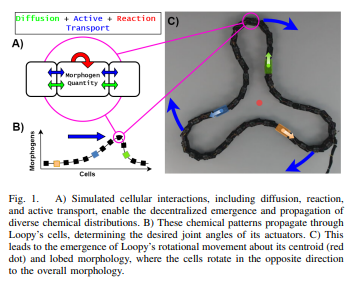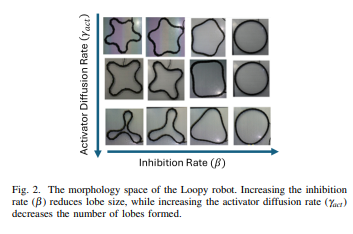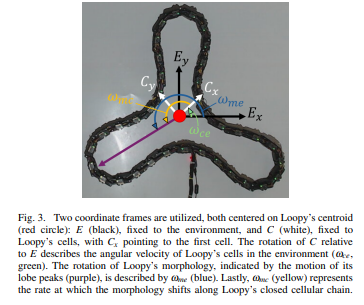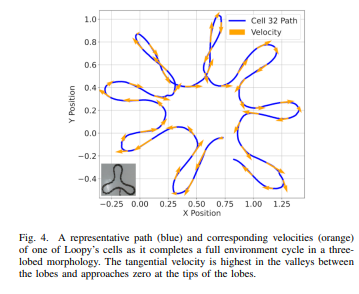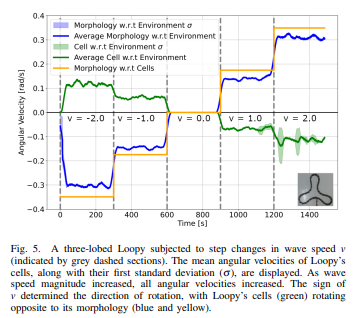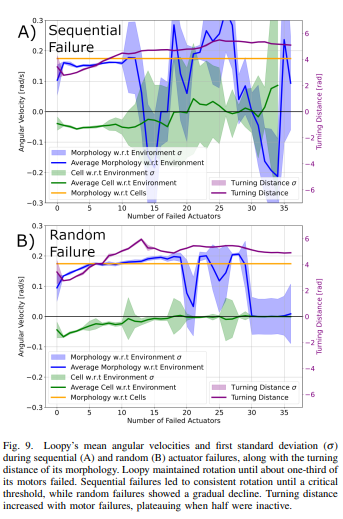Loopy Movements: Emergence of Rotation in a Multicellular Robot
Abstract— Unlike most human-engineered systems, many biological systems rely on emergent behaviors from low-level interactions, enabling greater diversity and superior adaptation to complex, dynamic environments. This study explores emergent decentralized rotation in the Loopy multicellular robot, composed of homogeneous, physically linked, 1-degree-of-freedom cells. Inspired by biological systems like sunflowers, Loopy uses simple local interactions—diffusion, reaction, and active transport of simulated chemicals, called morphogens—without centralized
control or knowledge of its global morphology. Through these interactions, the robot self-organizes to achieve coordinated rotational motion and forms lobes—local protrusions created by clusters of motor cells. This study investigates how these interactions drive Loopy’s rotation, the impact of its morphology, and its resilience to actuator failures. Our findings reveal two distinct behaviors:
- Inner valleys between lobes rotate fasterthan the outer peaks, contrasting with rigid body dynamics, and
- Cells rotate in the opposite direction of the overall morphology.
The experiments show that while Loopy’s morphology does not
affect its angular velocity relative to its cells, larger lobes increase
cellular rotation and decrease morphology rotation relative to
the environment. Even with up to one-third of its actuators
disabled and significant morphological changes, Loopy maintains
its rotational abilities, highlighting the potential of decentralized,
bio-inspired strategies for resilient and adaptable robotic systems.
Index Terms- Robotic Swarm, Bio-inspired systems, emergent
behavior, bottom-up design
Powered by DYNAMIXEL
All Credits Go To: Trevor Smith, Professor Yu Gu, and West Virginia University
Full Research Paper: https://arxiv.org/pdf/2409.15187
ROBOTIS e-Shop: www.robotis.us
DYNAMIXEL Page: www.dynamixel.com
DYNAMIXEL LinkedIn: DYNAMIXEL | LinkedIn
